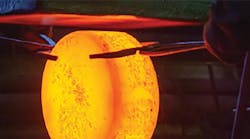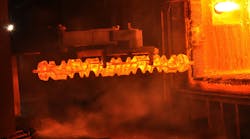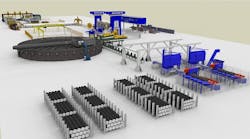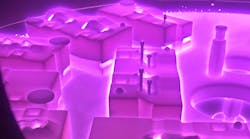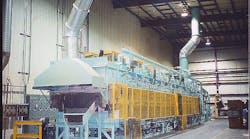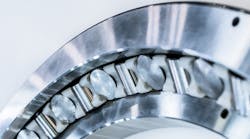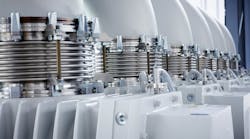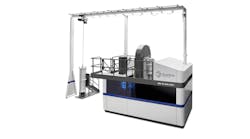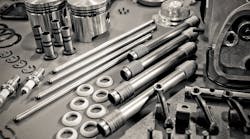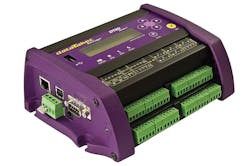For many engineered parts, forging is followed by thermal treatment to improve surface conditions or mechanical properties. “Salt-bath nitriding” is a thermochemical process in which nitrogen and carbon are diffused simultaneously into the surface of a ferrous part. A high concentration of nitrogen combines chemically with iron and other nitride-forming elements to produce a thin, but hard, outer layer of iron nitride ( Fe3N.)
Northeast Coating Technologies, Kennebunk, ME, offers Melonite® quench-polish-quench salt-bath nitriding, among other treatments to improve durability for piston rods, axles, and similar high-wear parts. NCT engineer Conrad Woodman installed a dataTaker DT80 data logger to continually monitor the Melonite® QPQ line, specifically the salt bath area. The dataTaker records tank temperature from multiple thermocouples and uses the readings to trend the run data, to prove best practices to NCT’s customers.
Melonite® QPQ forms a nitrocarburized layer around a part, comprised of an outer compound layer (iron, nitrogen, carbon and oxygen compounds) and a diffusion layer beneath it. Initially, the process preheats components to raise the surface temperature before they are placed in a tank of liquid Melonite® salt (MEL 1/TF 1 bath.) Alkali cyanate is the active constituent in the salt bath, and this step requires a temperature range of 896-1,166°F, with a target of 1,076°F. The components react with the salt and start to diffuse nitrogen and carbon into the substrate.
Tank temperature is the parameter NCT needed to monitor and trend for each of three Melonite® salt tanks and the AB 1 oxidizing bath tank.
CAS DataLoggers provided NCT with a Series 3 dataTaker universal data logger, to automate data collection. Woodman installed the dataTaker DT80 in a control cabinet about 30 ft from the salt bath tanks. The panel size is large enough to add a Windows 7-embedded, touchscreen PC: Users input an IP address in a web browser to retrieve the temperature data.
Woodman set up a link on the desktop PC in the salt-bath nitriding area, so users can export data in CSV format and work with it in Excel. The dataTaker can store up to 10 million data points in its internal memory, and allows configurable memory allocation based on sample schedule and mode, so it can be set to log only as long as needed. Users also can retrieve data from a flash drive via the dataTaker’s USB port.
The dataTaker doubles as an automated alarm system, giving users a quick way to tell if a potentially critical situation is developing. The dataTaker’s email alert feature will notify Woodman and other users if there’s an issue with the salt bath (e.g., if a tank starts to boil over it may cause a fire.) The temperature alarm sends an email alert that the process is malfunctioning whenever any tank temperature tops 1,250°F. In this way workers are able to take immediate action to prevent damage and production delays.
With dataTaker’s DPlot software, data from the thermocouple sensor page can be converted to CSV format. Users also can view the high and low range for each sensor, and it’s easy to open up the DBD files and plot them in a graph for presentation.
Using the included dEX software, users can create dashboard displays of real-time data, create trend charts and tables, and retrieve historical data for analysis. The Windows Explorer-type interface makes navigation easy. This built-in software runs directly from a web browser and can be accessed locally or remotely anywhere that a TCP/IP connection is available, and both DPlot and the dEX software run in Windows 10.
The dataTaker DT80 data logger helps Northeast Coating Technologies prove that its salt-bath nitriding process achieves a consistent nitride layer on all components. Not only can it connect to Type-K thermocouples on all four tanks, but also connect with any sensor to measure nearly any value. The system’s ease of programming and large internal memory gives users an effective data trending solution, so NCT can give customers detailed run-time data that shows their best practices. All the data is easy to organize and present in Excel.
“We had the dataTaker logger up and running seamlessly,” Woodman explained. “We had a couple hiccups originally in the programming aspect of it, but we quickly got through them since you don’t have to be an engineer to learn the software. This unit is exactly what we needed for the process we are using it for.”
